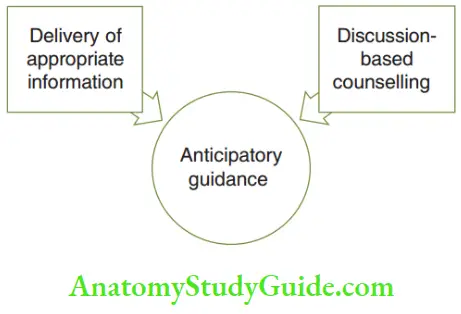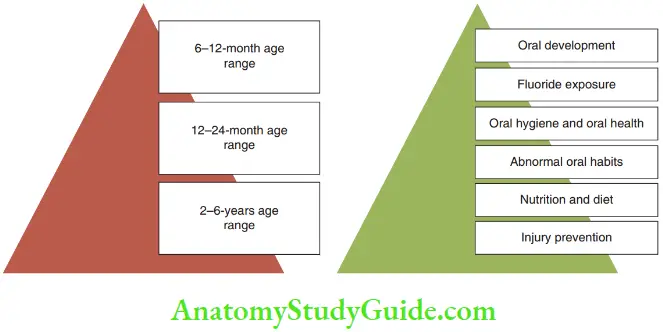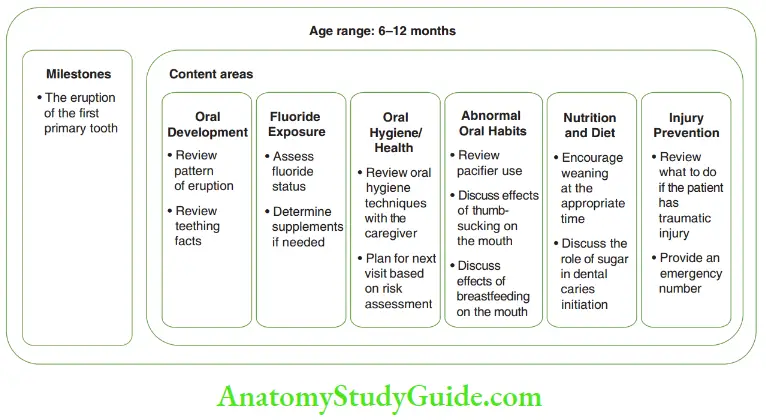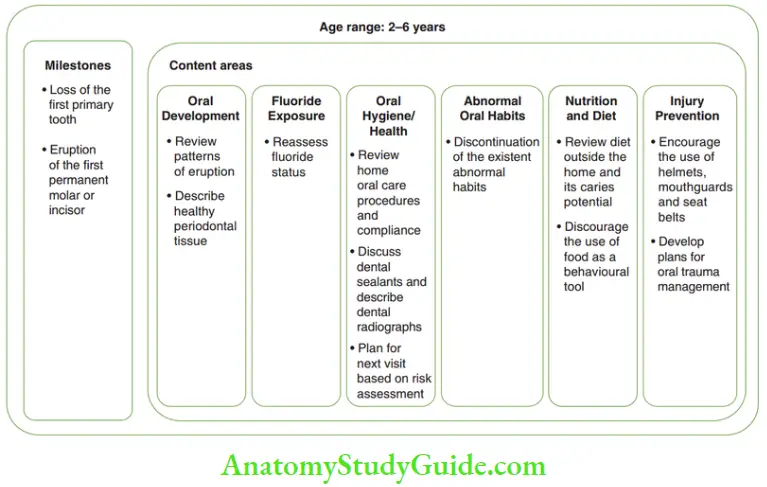Anticipatory Guidance Introduction
This chapter discusses the concept of ‘anticipatory guidance’. The American Academy of Pediatric Dentistry (AAPD) describes anticipatory guidance as ‘the process to provide practical, developmentally appropriate information about the children’s health to prepare parents for the significant physical, emotional and psychological milestones’.
Table of Contents
It is about the overall upkeep of good oral health of the child from infancy through adolescence into adulthood. Anticipatory guidance involves two integral portions, namely delivering the appropriate information to the parent (about the child’s dental health corresponding to the age group) and discussion-based counseling with the child’s parent.
| Body Fluids | Muscle Physiology | Digestive System |
| Endocrinology | Face Anatomy | Neck Anatomy |
| Lower Limb | Upper Limb | Nervous System |
Read And Learn More: Paediatric Dentistry Notes

The delivery of appropriate information is not to create a non-specific awareness but to narrate specific facts about the child’s dental health corresponding to the current age range of the child.
Discussion-based counseling pertains to providing information about the child’s diet and oral hygiene measures and to providing suggestions if any amendment is required in these aspects. This discussion includes an ‘alert’ to the parents about the impending change in the oral health of their child.
Anticipatory guidance provides a multifaceted, strategic framework for pediatric dentistry as it addresses all aspects of the child’s oral health, not limiting to decay prevention only.
The AAPD has identified three developmental age ranges that are associated with specific milestones. Each age range has six specific entities called ‘content areas’. The discussion and counseling are focused on these content areas. The three developmental ranges and six content areas are described.

Figures show the anticipatory guidance instilled in the three different age ranges suggested by AAPD.



Dental Home Concept
In 1992, the American Academy of Pediatrics (AAP) suggested a ‘medical home’ concept for
primary pediatric healthcare. It involves comprehensive, continuously accessible, family-centered, coordinated, compassionate, and culturally effective medical care delivered or supervised by qualified child health specialists or pediatricians.
Following suit, the AAPD proposed the model of a ‘dental home’ concept to establish a relationship between each parent and dentist. This has to be initiated at the latest before the child’s first birthday. The AAPD defines the ‘dental home’ concept as an ongoing relationship between the dentist and the parent, inclusive of all aspects of oral healthcare, delivered in a comprehensive, continuously accessible, coordinated, and family-centered way.
The ‘dental home’ concept covers about nine features that have to be delivered or informed to the child and the parent.

A periodontist who practices the concepts of ‘anticipatory guidance’ and ‘dental home’ is referred to as an ‘early interventionist’. Nowak and Cassamassino (1995) quoted that ‘children are not born with a list of instructions written on their chest.
Parents are clueless. Hence, strategic counseling and discussion with anticipatory guidance can help them instill good dental health in their children and maintain the same throughout childhood.
Age-Specific Parameters For Dental Health Counselling
The table gives a list of age-specific parameters suggested during dental health counseling

Anticipatory Guidance Summary
- Anticipatory guidance has two components – delivering age-appropriate information and discussion-based counseling.
- The AAPD describes three developmental age ranges and six content areas in each range.
- Anticipatory guidance for 6−12 months, 12−24 months, and 2–6 years of a child is depicted in Figures.
- Dental home concept gives nine parameters to be informed or delivered to the parent or child.
- The age-specific parameters for good dental health are listed in Table.
Leave a Reply